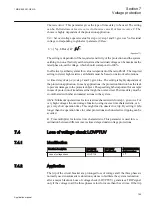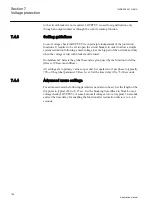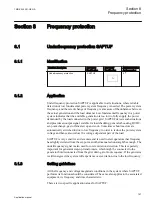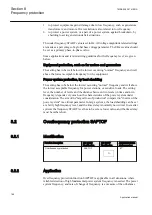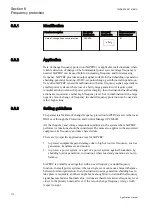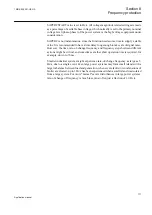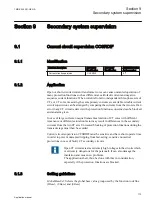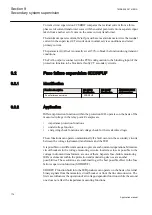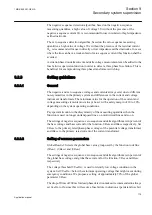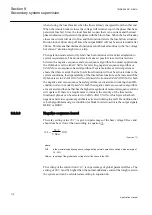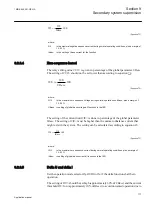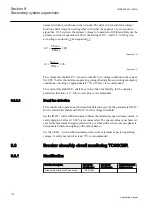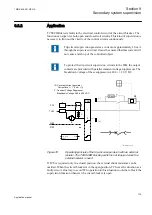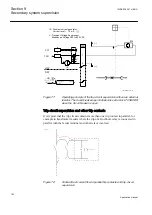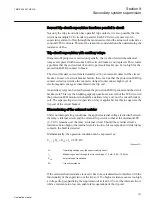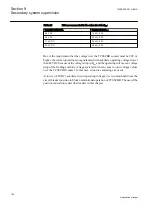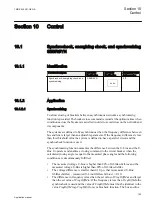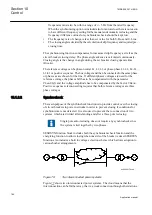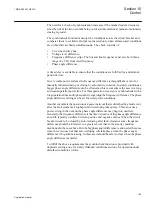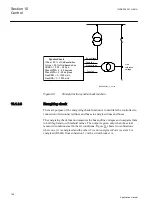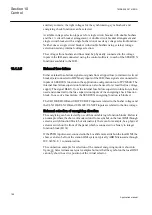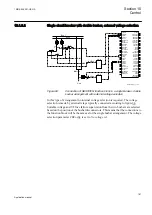
9.3.2
Application
TCSSCBR detects faults in the electrical control circuit of the circuit breaker. The
function can supervise both open and closed coil circuits. This kind of supervision is
necessary to find out the vitality of the control circuits continuously.
Trip circuit supervision generates a current of approximately 1.0 mA
through the supervised circuit. It must be ensured that this current will
not cause a latch up of the controlled object.
To protect the trip circuit supervision circuits in the IED, the output
contacts are provided with parallel transient voltage suppressors. The
breakdown voltage of these suppressors is 400 +/– 20 V DC.
1
PSM
2
Rs
Rext
(+)
(-)
HW
S W
PO1
TCS1
IS
V
IS: Constant current generator.
Current level ~ 1,0 mA (I
c
)
V: Transient Voltage Suppressor
Breakdown Voltage 380 to 400 VDC
I
c
TCSSCBR
TCS_STATE
BLOCK
ALARM
IEC13000025-2-en.vsd
GUID-B056E9DB-E3E5-4300-9150-45916F485CA7 V2 EN
Figure 76:
Operating principle of the trip-circuit supervision with an external
resistor. The TCSSCBR blocking switch is not required since the
external resistor is used.
If TCS is required only in a closed position, the external shunt resistance can be
omitted. When the circuit breaker is in the open position, TCS sees the situation as a
faulty circuit. One way to avoid TCS operation in this situation would be to block the
supervision function whenever the circuit breaker is open.
1MRK 505 291-UEN A
Section 9
Secondary system supervision
179
Application manual
Summary of Contents for Relion REQ650
Page 1: ...Relion 650 series Breaker protection REQ650 Application manual ...
Page 2: ......
Page 20: ...14 ...
Page 26: ...20 ...
Page 48: ...42 ...
Page 82: ...76 ...
Page 90: ...84 ...
Page 160: ...154 ...
Page 178: ...172 ...
Page 264: ...258 ...
Page 288: ...282 ...
Page 302: ...296 ...
Page 330: ...324 ...
Page 338: ...332 ...
Page 339: ...333 ...

